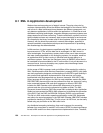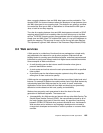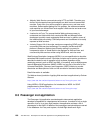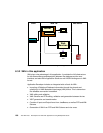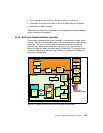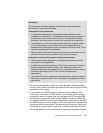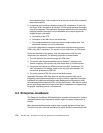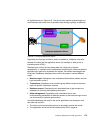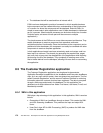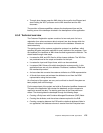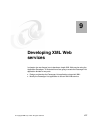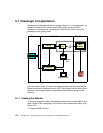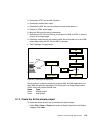172 The XML Files: Development of XML/XSL Applications Using WebSphere Studio
documentation page. This is made use of at this point to test if the retrieval of
data works properly.
6. A graphical user interface is developed using XSL stylesheets. To start with,
the target HTML file needs to be located. This file would represent the output
page to be displayed. The Application Developer wizards are used to create a
mapping between the output from the database to the output required for
display through a few steps:
a. Generating of the DTD
b. Generation of the XML file for the output data
c. The mapping between the input data and the output display data. The
stylesheet, however, has to be customized.
7. A servlet is developed to transform the data from a hierarchical structure to
HTML using XSLT processors. The servlet is in turn called from a HTML page.
During the execution of the system, only the components in the run-time
components are executed. The following sequence of events follows:
1. The user activates the servlet through the HTML form.
2. The servlet calls the generated Web service classes. It calls the proxy
classes, supplying it the primary key and stores them in a DOM structure.
3. The servlet then passes the DOM structure to the XSL Transformer. The
XSLT stylesheet of the display output is also an input to the transfer. The
transformer produces an HTML file.
4. The newly created HTML file is sent to the Web browser.
Application Developer XML Web Services provide a powerful new tool for
integrating heterogeneous applications over the Internet. Application Developer
provides a fully supported production-ready deployment environment for Web
services based on the Apache SOAP run-time environment. XML plays a central
part by providing a data interchange format that is independent of programming
languages, operating systems, and hardware.
8.4 Enterprise JavaBeans
The Enterprise JavaBeans (EJB) specification provides a framework for creating
reusable business logic components without regard to system infrastructure or
location.
Many business problems today require large, complex systems to solve them.
The trend is to use a multi-tier architecture in which the client communicates with



